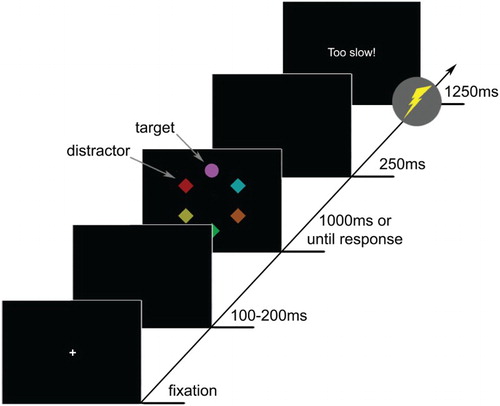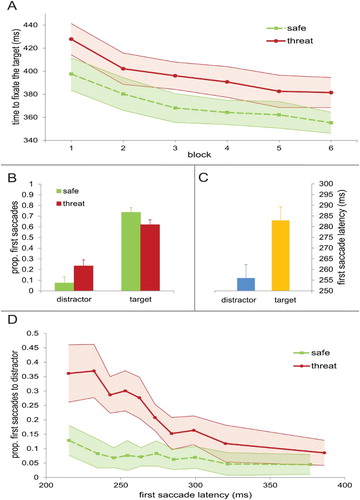Figures & data
Figure 1. Sequence and time course of trial events. Participants had to make a saccade and fixate the unique shape (target; e.g. the circle) for 100 ms. One of the non-target shapes (distractor) could be red or blue indicating whether there was the possibility of getting a shock (e.g. red) or not (e.g. blue) on that trial. Shocks were delivered together with the onset of the feedback display.

Figure 2. (a) Time it takes to fixate the target for both distractor types across blocks. Error bars in this and all other figures represent within-subject 95% confidence intervals. (b) The proportion of first saccades going either to the distractor or to the target for both distractor types separately. (c) The mean latencies of first saccades either going to the distractor or target collapsed over both distractor types. (d) The proportion of first saccades going to the distractor as a function of first saccade latency for both distractor types separately.

